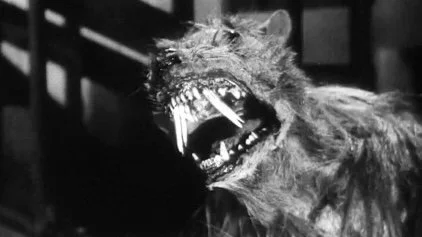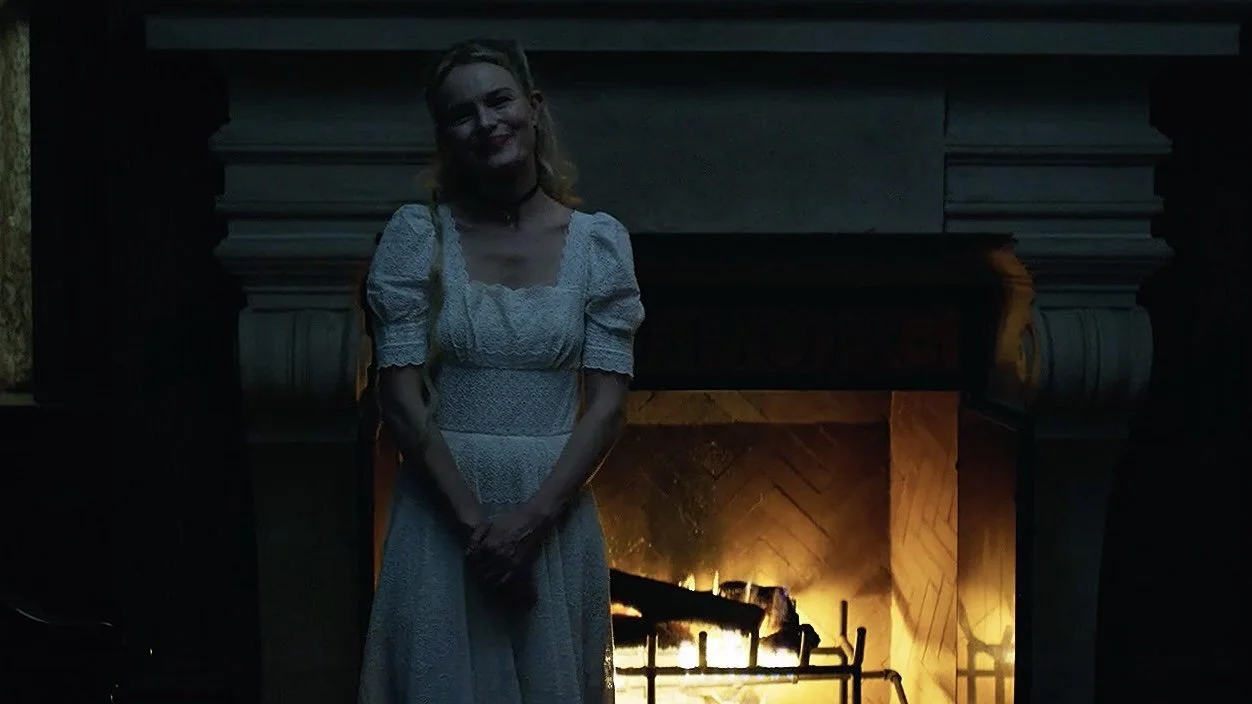Danse Macabre #11: Film Review — "The Killer Shrews" (1959)
In 1981, Stephen King published Danse Macabre, a work of non-fiction wherein the author acts as a tour guide through the history of horror. He addresses the social issues and political conflicts that have influenced creators over the years, and the ways creators have influenced each other.
King closes out the volume by recommending 96 films and 113 books released during the 1950-1980 period that he feels have significantly contributed to modern genre fiction. With this Fearsome Queer column, I’ll be making my way through those titles in no particular order.
Watching The Killer Shrews reminded me that I need to check out more regional horror films—super low-budget independent movies produced far beyond of the sphere of Hollywood. Some excellent examples include Carnival of Souls, Messiah of Evil, Death Drop Gorgeous, and of course Night of the Living Dead—the granddaddy of them all! Regional films are a great place to discover rising talent or witness an established artisan make a pivot, as director Ray Kellogg did with The Killer Shrews. He had been a special effects guy for over a decade when he turned to directing. The SFX here are not mind-blowing, but, as a former set dresser and props assistant, I have to respect the ingenuity, especially for 1959.
Although the story is set on a remote island, it could’ve been filmed anywhere—hell, this was probably shot in someone’s backyard, which is not a bad thing! The story concerns a scientist working on a growth hormore (aren’t they all), using shrews as test subjects due to their short life spans and early mating periods. Shrews are tiny insectivourous woodland rodents with sharp teeth, so naturally the bio-engineered hormones cause them to get huge and outgrow their previous diet of tiny bugs. And since a shrew needs to consume approximately three times its body weight a day or else starve to death, these mutated beasts choose to hunt the largest mammals on the island—the people!
Unable to flee the island due to an approaching storm, the lab occupants—the scientist, his randomly Swedish daughter Ann, her unpleasant fiancé Jerry, a researcher, and a servant—bunker down in the compound. Even the conventionally handsome Captain Thorne Sherman and his first mate Rook, who were delivering supplies to the lab, must stay the night. Thorne shelters in the compound with the rest while Rook stays behind with the boat, unaware of the looming threat. From there, Kellogg dedicates more time than necessary to fleshing out the dynamics between everyone, particularly Thorne and Ann’s flirtatiousness and Jerry’s corresponding jealousy.
Thorne learns that the group has been barricading themselves in every night because the nocturnal monster shrews recently escaped from their enclosure and have been reproducing exponentially. Not wanting the plug to be pulled on his research, the scientist has opted to not inform the authorities, and is instead just hoping the shrews will eventually cannibalize each other. Easy-peasy, everyone wins!
Or do they? It concerns me how no one in this film is that concerned about Rook. If the scientist and his co-inhabitants are indeed aware that monster shrews scurry about the island at night looking for prey, then why wouldn’t they insist that Rook also stay in the compound for his own safety? They want the shrews to starve, right? Then why give them a person to feed on? Is it because the boat he’s supposedly protecting (for them) is more valuable than his life? Well… actually… maybe that is how they see it.
An actor named Judge Henry Dupree plays Rook, and he is the only Black cast member. The movie, unsurprisingly, treats Rook as a worthless, uninteligable dolt. It’s kind of upsetting how often the subtitles on Paramount+ said “[inaudible]” when he was speaking. He isn’t “inaudible”—we can hear his voice—it’s just difficult to parse out his words sometimes, because Rook’s function is basically to mumble and bumble around, as Thorne’s flunky. It’s practically minstrel-esque. So, based on everything you’ve read here, it should come as no real spoiler that Rook is the first to die.
Modern audiences would probably find Rook’s death funny, but I find it sad. As the lowest rung on the ladder, he’s tasked with guarding Thorne’s boat during a hurricane, then once he comes ashore he’s ambushed by the shrews. It reminds me of the opening to The Lost World: Jurassic Park, where the little girl gets attacked by the carnivorous chicken-sized dinos (now that’s a death scene I find funny). Unlike her, Rook climbs a tree while calling out, “Help this fella!” But no one comes; they’re too preoccupied with being secure indoors. The shrews ultimately reach and devour Rook, then he’s… hardly mentioned again? Thorne briefly entertains the idea of checking on Rook when he hears disturbing noises, but the others persuade him to do nothing instead. Pretty shitty!
I will, however, concede that the shrews themselves are funny lookin’. For the close-ups, Kellogg & Co. used gnarly puppets. They’re a smidge silly, but fuck it—they suit the vibe of the picture, and I would 100% put one in my office as imitation taxidermy. Because that’s my vibe! For the wider shots where we need to see the creatures’ whole bodies in motion, the production crew covered a few dogs in a bunch of tangled yarn ’n shit and had ’em just run around lookin’ ridiculous with big dumb tails tacked on. It’s not even well-masked—like, they are very obviously dogs under messy shag—but, once again, that’s the vibe. There are also supposed to be dozens, maybe hundreds, of these ravenous mongrels on the loose, but we only ever see three or four at a time for obvious reasons, and, ya know what, it’s great.
The Killer Shrews is one of a handful of regional films from this era to actually receive distribution. So, while watching it, I couldn’t help but think of genre-enamored 1950s kids enjoying the hell out of the nonsense; I mean, this was sorta made for them. Admittedly, though, my view of 1950s youth culture has been shaped by 1970s and 80s cinema—movies like American Graffiti, Back to the Future, and Stand By Me—but it’s worth noting that a lot of those 70s and 80s movies were made by creators who grew up/entered early adulthood in the late 50s. That doesn’t mean they produced accurate representations, especially not when nostalgia is involved, but they did at least offer their personal impressions of those bygone years…
It may sound crazy, but perhaps it’s not that farfetched to say that Night of the Living Dead might not exist without The Killer Shrews—or, at the very least, movies akin to The Killer Shrews. Beyond the two sharing the basic premise of people blockading themselves inside a building while monstrous things try to get at them, they share a certain gumption; both films exemplify an independent spirt. This is what Stephen King is talking about in Dance Macabre when he alludes to how creators have influenced each other over the years, whether directly or indirectly. Was Steven Speilberg thinking of The Killer Shrews when he directed the opening to The Lost World: Jurassic Park? Maybe, maybe not. But that opening probably wouldn’t play out exactly as it does without The Killer Shrews.





